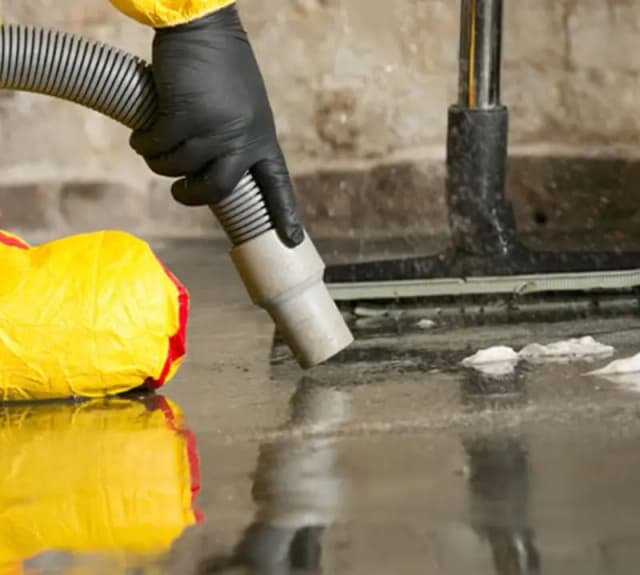Flooding in a commercial building doesn’t just bring water damage — it creates a perfect breeding ground for mold. Within 24 to 48 hours of water exposure, mold spores can begin to grow on damp surfaces, leading to serious health risks and structural damage. This is why professional commercial flood cleanup Kitchener and commercial flood cleanup Waterloo teams act quickly to stop mold in its tracks.
Mold doesn’t just pose risks to health. Left unaddressed, it can degrade building materials, cause musty odors, and create long-term business disruptions. Cleanup professionals use targeted strategies to reduce moisture, remove contaminants, and prevent future outbreaks.
What Steps Do Professionals Take Immediately After a Flood?
The first 24 hours are critical in preventing mold growth after a flood. Commercial flood cleanup teams in Kitchener and Waterloo prioritize rapid response. Their first step is a thorough inspection and assessment of the affected areas. Using moisture meters and infrared cameras, they detect hidden water behind walls, under flooring, and in ceilings.
Next, they focus on water extraction using industrial-grade pumps and vacuums. The faster the standing water is removed, the lower the risk of mold spreading.
Once the bulk of the water is gone, professionals use dehumidifiers and high-powered air movers to begin the drying process. This stage is essential because it ensures even the smallest damp areas are addressed, which is where mold typically begins to grow.
How Do Dehumidifiers Help in Mold Prevention?
Dehumidifiers play a central role in commercial flood cleanup Waterloo and Kitchener operations. These machines reduce air moisture to a level where mold cannot survive. Mold thrives in environments with humidity levels over 60%. Restoration teams aim to bring humidity down to 30-50%.
High-capacity commercial dehumidifiers are strategically placed around the premises to pull moisture from the air and materials. This method significantly shortens the drying time for carpets, drywall, and other porous materials that mold loves to feed on.
The cleanup teams also monitor humidity levels consistently throughout the drying phase to ensure optimal conditions for mold prevention.
What Materials Are Removed to Stop Mold Growth?
Not all materials can be salvaged after flooding. In commercial flood cleanup Kitchener and Waterloo projects, professionals assess which items must be disposed of to prevent mold colonization.
Items typically removed include:
- Carpets and padding that are saturated for more than 24 hours
- Drywall and insulation that absorbed water
- Ceiling tiles showing signs of dampness or staining
- Wooden materials that are swollen or starting to rot
Removing these materials early helps break the mold lifecycle and reduces the chance of spores spreading to other areas.
What Kind of Antimicrobial Treatments Are Used?
Even after drying and removal of damaged materials, surfaces may still contain microscopic mold spores. To neutralize these, commercial flood cleanup Waterloo and Kitchener specialists apply EPA-approved antimicrobial sprays and biocides.
These treatments are sprayed or fogged throughout the affected area, targeting flooring, walls, HVAC ducts, and even furniture. The goal is to kill any lingering mold before it takes hold.
Additionally, many of these cleaners have residual properties, meaning they continue to work long after application, offering extended protection against mold.
How Does Air Filtration Help Prevent Mold Spread?
Flood cleanup teams also focus on air quality control to stop mold spores from traveling and settling elsewhere in the building. High-Efficiency Particulate Air (HEPA) filters are used in commercial air scrubbers to trap airborne mold spores, dust, and contaminants.
This is especially critical in buildings with ventilation systems, as mold spores can easily spread through air ducts. By filtering the air and maintaining negative pressure zones, technicians prevent cross-contamination between rooms.
In both commercial flood cleanup Kitchener and Waterloo, HEPA air filtration is standard practice during cleanup to maintain safe breathing conditions and limit mold exposure.
Are Post-Cleanup Inspections Necessary?
Yes, absolutely. Once cleanup is complete, professionals conduct a thorough post-remediation inspection. This step ensures the space is dry, safe, and free of mold risks.
Moisture meters and thermal imaging tools are used again to double-check for hidden moisture. Air and surface samples may also be taken and tested in labs to detect mold spore presence.
Many reputable companies in Kitchener and Waterloo offer mold-free certification or guarantee, ensuring peace of mind for business owners who want to reopen with confidence.
What Preventive Measures Are Taken to Avoid Future Mold Issues?
After the initial cleanup, many businesses choose to invest in mold prevention services as part of ongoing property maintenance. Commercial flood cleanup professionals may suggest:
- Installing humidity sensors and automated dehumidifiers
- Sealing vulnerable areas like basements, foundation cracks, or windows
- Upgrading HVAC filters to HEPA-level quality
- Creating a flood response plan for future water damage events
They may also recommend regular inspections, especially during rainy seasons or after plumbing repairs. Prevention is always more cost-effective than treatment.
Why Should You Hire a Professional Flood Cleanup Company?
While it may seem tempting to handle minor flooding in-house, the risks of mold growth and improper cleanup are too high. Professional services bring industry knowledge, commercial-grade equipment, and proven techniques that minimize downtime and damage.
Businesses in Kitchener and Waterloo trust commercial flood cleanup experts to restore their buildings safely and efficiently. Professionals understand local building codes, insurance requirements, and safety protocols, giving you added protection and faster recovery.
Moreover, hiring experienced professionals can protect your business reputation. A mold outbreak not only affects employee health but could also lead to legal liability if it spreads or causes illness among customers.
Conclusion: How Can You Ensure Mold Won’t Return?
Preventing mold after a flood is not a one-step process. It requires a combination of fast action, expert drying, safe material disposal, and strategic prevention. That’s why engaging experts in commercial flood cleanup Kitchener or commercial flood cleanup Waterloo is your best defense against long-term damage.
These professionals move swiftly to remove moisture, eliminate mold spores, and restore commercial buildings to safe, operational conditions. With the right tools and training, they help businesses avoid expensive repairs and unhealthy environments.
If your property has experienced flooding, don’t wait for mold to take hold. Contact a trusted local flood cleanup service immediately — the faster the response, the lower the risk.


